In the bustling world of a marketing agency, consistency and efficiency are among the most vital elements. Agency SOPs (Standard Operating Procedures) are the blueprint for operational success, ensuring every team member is on the same page, executing tasks efficiently, and aligning towards common goals.
This comprehensive guide will help you understand the different aspects of an SOP, how it is useful for your agency, and its implementation.
What is an SOP? What Does SOP Stand For?
An SOP – Standard Operating Procedure, is a step-by-step instruction that assists teams in carrying out routine procedures and operations. It is a vital document to maintain quality and uniformity in the execution of tasks within the agency.
Standard Operating Procedures (SOPs) are designed to ensure peak performance, establish clear responsibilities, and maintain consistency while simultaneously minimizing misunderstandings and non-compliance with regulations.
Why Are SOPs Important? Top 3 Benefits
SOPs are vital for several reasons; among them all, here are the Top 3 benefits:
- Consistency: With SOPs, each team member will follow the same steps, ensuring consistent and high-quality output.
- Compliance: SOPs ensure that your agency adheres to industry regulations and standards, helping you avoid legal issues.
- Clarity: SOPs give team members clear instructions, reducing misunderstandings and errors.
Types of SOPs
Creating an SOP is a complex procedure, but it’s pretty straightforward when you break it down into steps. Amongst various types, there are mainly three types of SOPs in Marketing:
Step-by-Step SOPs
This type of SOP outlines a stepwise process of completing a task and includes detailed information for each step. A good example would be an SOP for adding an SEO article on a client’s website with these steps:
- Conduct keyword research and find a topic
- Understand the objectives of the task and the target audience
- Create an outline with clear instructions for each heading and subheading
- Write a first draft by imbibing keywords, internal links, and citations
- Edit and proofread. Check for keyword density
- Format and upload the article to the website
- Adjust the metadata, title, URL, and publish the article
Checklists
It is a simple SOP format with an overview of the steps that need to be taken. Unlike the step-by-step SOP, a checklist ensures nothing is missed.
Flowcharts
A flowchart is a diagrammatic representation of the steps that must be taken in different situations. It is more of a decision-making SOP that guides team members in handling workflow based on a situation.
How to Write an SOP in 10 Steps
Here are steps on How to Write an SOP in a brief but comprehensive format.
1. Identify the Purpose
Comprehend and clearly articulate the objective of the SOP. What process does it aim to standardize and why?
2. Information Gathering
Gather all necessary information about the process, including the people involved, the tasks, and the work environment conditions.
3. Identifying the Scope
Identify the limits and scope of the Standard Operating Procedure. Which parts of the process will it cover, and which parts will not?
4. Step-by-Step Procedure
Break down the process into a series of step-by-step instructions. Make sure each step is clear and concise.
5. Create a Draft
Write a draft of the SOP that includes all the information gathered in the previous steps. Use clear, concise, yet simple language.
6. Reviewing the Draft
Have someone else review it to ensure it’s easy to understand and achieves its purpose. However, make necessary revisions based on the feedback.
7. Test the SOP
Test the SOP in actual conditions to help identify gaps or areas of confusion that must be addressed immediately.
8. Revise and Finalize
Based on the test results, make any necessary revisions to the SOP. Once all modifications are complete, finalize the SOP.
9. Implementing the SOP
Put the SOP into practice. Ensure all relevant team members know and have access to the SOP.
10. Monitor and Review
Regularly review the SOP’s effectiveness and make necessary updates to ensure it continues to meet its objectives.
Remember, the key to a good SOP is clarity, simplicity, and consistency. It should be easy to understand and follow, even for someone unfamiliar with the process.
Standard Operating Procedure Checklist – SOP Best Practices
Standard Operating Procedures (SOPs) play a vital role in ensuring smooth and effective processes within any organization. They provide a detailed guide on how to perform tasks, ensuring consistency and quality across all operations.
However, creating effective SOPs can be a challenging task.
The purpose of this Standard Operating Procedure Checklist is to serve as a practical guide:
- Define Clear Objectives and Scope
- Identify Target Audience and Stakeholders
- Develop a Detailed Step-by-Step Procedure
- Include Necessary Compliance Information
- Incorporate Visual Aids and Flowcharts
- Review and Test the SOP to Collect Feedback
- Make Adjustments Based on Feedback
- Train Employees and Communicate Changes
- Monitor and Regularly Review the SOP
- Document and Archive Revisions and Updates
Following these best practices when creating your Standard Operating Procedures can significantly improve the efficiency and consistency of your operations.
Agency SOP Templates
Standard Operating Procedures (SOPs) serve as the fundamental support for the efficiency of agency operations.
After years of successfully running the agency business model, we have meticulously crafted some essential marketing SOP templates to help entrepreneurs starting out in this space.
These templates will be your guiding star in handling agency operations such as hiring, project management, project delivery, budget allocation, lead generation, and almost every other facet.
You can access the templates here.
What is the Difference? Let’s Compare SOPs
To understand the differences between various operational documents, let’s start with Standard Operating Procedures (SOPs) and compare them with critical documents like Work Instructions and Policies.
SOP vs. Work Instructions
Standard Operating Procedures (SOPs) and Work Instructions are essential to an organization’s operations. However, they serve different purposes.
- An SOP, as we discussed earlier, is an informational aid that outlines and describes various activities and tasks needed to accomplish organizational goals. Work instructions are more granular and focus on the nitty-gritty details of a specific task, so work instructions are mainly dedicated to the person carrying out a specific task.
- An SOP breaks down all core activities into smaller ones and assigns them to specific organizational roles or people. On the other hand, work instructions are like a step-by-step guide for specific tasks, providing detailed instructions about the method to accomplish a task.
SOP vs. Policy
- While SOPs provide specific guidance on executing various activities, a policy acts as a framework intended to steer the decision-making in an organization.
- Policies communicate the leadership’s expectations to team members – inform them about how they’re supposed to act in specific situations and the consequences of non-compliance.
- SOPs lay the groundwork for operational excellence, offering meticulous instructions for various tasks. Meanwhile, policies provide the ethical and strategic compass that steers decision-making across the organization in the right direction.
- Combining SOP and Policy creates a robust framework that ensures efficiency and alignment with organizational values.
Frequently Asked Questions (FAQs)
Here’s a quick FAQ section to answer your queries on Agency SOPs.
How often should SOPs be updated?
SOPs should be reviewed at least once a year and, if needed, revised as well. Nonetheless, the regularity of updates is also influenced by the characteristics of the SOP, the organization’s current objectives, and the specifics of its operational processes.
Updating the agency’s SOPs annually ensures that the team follows the current procedures and delivers efficient results. Also, frequent updates depend on vital factors such as structural shifts, legal updates, regulatory changes, and staff changes.
What is the best way to monitor SOP updates and changes?
Here’s what you can do to monitor SOP updates and changes for your marketing agency:
- Setting up a review schedule
- Dedicate someone to update SOPs
- Check updated SOPs to make sure they’re accurate
- Use Software to manage SOPs
- Keep track of all the SOPs
Who is responsible for implementing and monitoring SOPs?
Typically, there are several roles responsible for implementing and monitoring SOPs, which include:
- Management/ Sponsor
- Supervisors
- Teams/ Designated Individuals
- Owners
Conclusion
Creating SOPs for your marketing agency can seem daunting, but it can be simple and highly beneficial with the right approach. By following the steps discussed throughout this guide, you’ll be well on your way to creating effective SOPs that boost your agency’s efficiency, consistency, and compliance.
You can also enroll in our training programs if you are a budding agency owner or want to scale your agency business up to 7-figures in MRR.






